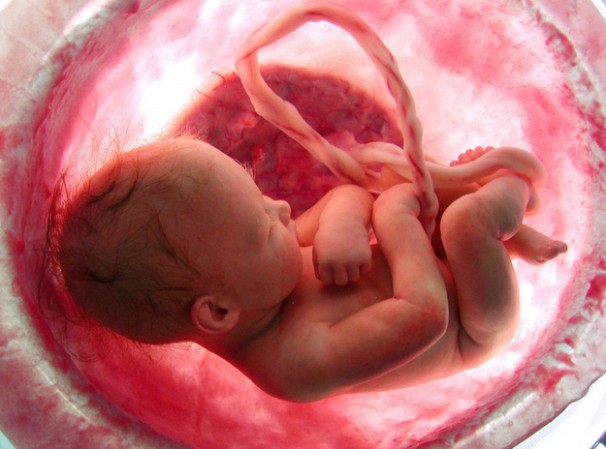Judge Jackson said she didn’t know whether an unborn child could feel pain at 20 weeks. But our understanding has advanced considerably since Roe.
“Can an unborn child feel pain at 20 weeks?”
That was Senator Lindsey Graham’s (R., S.C.) question to Supreme Court nominee Judge Ketanji Brown Jackson on Wednesday. Her response? “Senator, I don’t know.”
There are, of course, some experts who deny that fetuses can feel pain. As bizarre as it sounds, there is no scientific, objective measure of pain, which leaves its assessment open to interpretation. But by using the same kinds of inferences we make about adult pain, powerful scientific evidence for fetal pain is bucking the old consensus. Its adherents, however, want to freeze the old status quo in place.
The presumptive justice and her colleagues should avoid this trap and let the American people make policy based on the most current science. Here’s why.
Neuroscientist Stuart Derbyshire and I disagree on the morality of abortion: He’s pro-choice; I’m pro-life. But we concur, as we wrote two years ago in the Journal of Medical Ethics, that some kind of fetal pain may exist “from as early as 12 weeks.”
That’s a startling reversal for Dr. Derbyshire, who for decades had been “a leading voice against the likelihood of fetal pain.” He co-authored a 2010 report, widely considered to be the authoritative view on the topic, arguing that fetal pain was not a serious consideration.
HELP LIFENEWS SAVE BABIES FROM ABORTION! Please help LifeNews.com with a donation!
So when, during oral argument in Dobbs v. Jackson Women’s Health, Supreme Court justice Sonia Sotomayor said that the idea of fetal pain before 24 weeks is “not well-founded in science at all,” I raised an eyebrow. And when Justice Kagan suggested “not much has changed since Roe,” I raised the other one, for three reasons.
First, the very concept of fetal pain has come to the fore only in the years since Roe was decided. We had barely considered fetal pain, or needed to, until Roe legalized abortion in 1973.
Well into the 1980s, many doctors didn’t think that newborns could feel pain. They routinely operated on preemies, such as Jeffrey Lawson, with pancuronium — a paralyzer to restrain them — but without any pain relief. Indeed, this practice was “widespread,” as pediatric anesthesiologist KJS Anand, an internationally recognized expert on neonatal and fetal pain, noted in 1987.
“Most adults would be shocked if they saw what was done to children in hospitals without anesthetics,” one pediatrician commented in 1991. “It’s like roping and holding down a steer to brand it.”
In 1994, researchers caused a rumpus when they found that fetuses responded to injury in much the same ways as older children and adults, and that pain relievers suppressed such responses.
Second, apart from abortion, fetal anesthesia is routine and recommended for all fetal surgeries from the second trimester (14 weeks) onward. The first fetal surgery didn’t occur until nearly a decade after Roe.
Serving as an expert witness to Congress in 2005, Anand — who by then had extended his research from postnatal to prenatal pain — testified that providing fetal anesthesia was “consensus” for surgery at 20 weeks. A year earlier, he had also testified that a fetus would feel “severe and excruciating pain” during abortions at this age.
Finally, although the science of fetal pain is still developing, we’ve made immense progress.
Unlike, say, your cholesterol levels, there is no objective measure of pain. This means we must rely on inference from a variety of sources — pain and stress hormone levels, fetal MRI and ultrasound, and behavioral observations.
But skeptics of fetal pain deny these inferences, because they deny any possibility of pain before the brain’s cortex — the outer layer thought to be the seat of higher-level thought and emotion, including pain — starts becoming functional. No cortex; no pain.
This was Dr. Derbyshire’s position until 2020. In our article, we discussed the neuroscientific findings that changed his mind — primarily that the cortex doesn’t seem necessary for pain.
For example, one study from 2016 revealed increased pain experience in a patient lacking much of his cortex. Another showed activation of the cortex in subjects who felt no pain at all.
A recent paper by former Air Force physician Dr. Bridget Thill, one of the most thorough, even-handed reports on the topic I’ve ever read, expands on this evidence against cortical necessity while laying out the evidence for fetal pain in systematic detail.
The most intriguing parts of Dr. Thill’s paper are the sections on fetal facial expressions, body movements, and stress hormone release in response to intrusive procedures. Advances in 3D ultrasounds increasingly allow us to observe, describe, classify, and compare fetal responses to procedures in startling detail — including every chin quiver, brow furrow, and eye squeeze. These are the same kinds of responses that pediatric surgeons have interpreted in their patients, at least since the late 1980s, as pain.
Indeed, quite a lot has changed since Roe and Casey. Those cases are standing still while the science of fetal pain presses forward. The Court should let the American people press forward along with it.
LifeNews Note: John Bocmann is a military physician assistant and co-author of RECONSIDERING FETAL PAIN.








